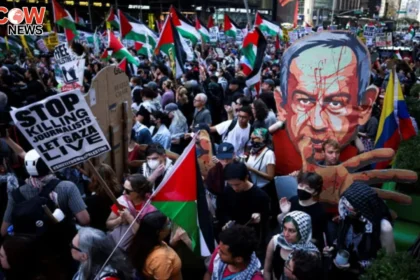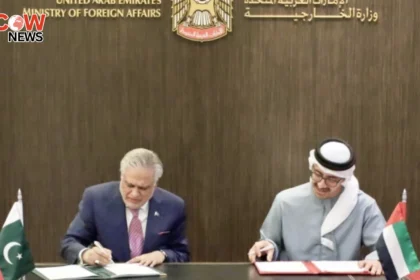In a significant development for Pakistan’s economy, the Pakistani rupee saw a notable recovery against the US dollar in the interbank market on Thursday, following the announcement of a crucial deal with the International Monetary Fund (IMF). The dollar’s value dipped by 25 paisas, bringing the exchange rate down to Rs277.60. This shift has sparked discussions among economists and market analysts regarding its implications for the broader economic landscape of Pakistan.
Understanding the IMF Deal
The IMF deal is a pivotal moment for Pakistan, a country that has faced numerous economic challenges over the past few years, including high inflation, low foreign exchange reserves, and a substantial trade deficit. The recent agreement with the IMF entails a loan program designed to stabilize the economy, provide necessary financial support, and encourage economic reforms.
Key Features of the IMF Agreement
- Financial Support: The loan program includes significant financial assistance that will help Pakistan meet its immediate funding needs. This support is vital for stabilizing the economy and preventing a balance of payments crisis.
- Reforms and Conditionalities: The IMF has laid down specific conditions that the Pakistani government must fulfill to access the funds. These typically include measures aimed at enhancing revenue generation, reducing fiscal deficits, and improving the efficiency of public spending.
- Structural Adjustments: The agreement is expected to push for structural reforms in various sectors, including taxation, public sector enterprises, and energy. These reforms aim to address the underlying issues that have hampered economic growth.
- Monetary Policy Adjustments: The IMF may also recommend changes in monetary policy to control inflation and stabilize the currency. This could involve interest rate adjustments to manage inflationary pressures.
Market Reaction
The announcement of the IMF deal has elicited positive responses from various market segments, particularly in the currency and equity markets.
Currency Market Dynamics
Following the announcement, the Pakistani rupee’s slight recovery against the dollar reflects improved market sentiment. The drop in the dollar’s value to Rs277.60 indicates a restoration of confidence among investors and currency traders. Market analysts have noted that this change is largely driven by the anticipation of increased financial stability as a result of the IMF’s support.
The currency’s recovery is significant in the context of Pakistan’s ongoing struggle with inflation, which has severely impacted purchasing power. A stronger rupee can help alleviate some inflationary pressures by making imports cheaper, which is particularly important for essential goods like food and energy.
Stock Market Surge
The positive sentiment extended to the Pakistan Stock Exchange (PSX), where the KSE-100 Index recorded remarkable gains. On Thursday, the index surged to an all-time high, reflecting investor enthusiasm surrounding the IMF deal.
The benchmark index rose by 450 points, reaching 82,700 points, and at one point even peaked at 83,000 points. This surge indicates a strong recovery in investor confidence, with many seeing it as an opportunity to capitalize on potential future growth driven by the economic reforms tied to the IMF agreement.
Economic Implications
The ramifications of the rupee’s recovery and the stock market’s surge extend beyond immediate financial metrics. They are indicative of broader economic trends and potential future developments.
Impact on Inflation
One of the most pressing issues facing Pakistan is inflation, which has reached concerning levels in recent years. A stronger rupee can play a crucial role in controlling inflation. As the currency appreciates, the cost of imported goods decreases, leading to lower prices for consumers.
For example, essential commodities such as oil and food products are heavily impacted by exchange rates. A stable or appreciating rupee can help mitigate the rising costs associated with these imports, thus providing relief to households.
Foreign Investment Attraction
The IMF deal is also likely to improve Pakistan’s attractiveness as a destination for foreign investment. Investors typically seek stability and predictability, and the backing of the IMF can enhance perceptions of economic governance and policy commitment.
Foreign direct investment (FDI) is essential for Pakistan to address its economic challenges. The inflow of FDI can lead to job creation, technology transfer, and improvements in infrastructure, all of which are critical for sustainable economic growth.
Challenges Ahead
While the recent developments are promising, significant challenges remain that could impede Pakistan’s economic recovery.
Implementation of Reforms
The success of the IMF deal hinges on the Pakistani government’s ability to implement the necessary reforms. Historically, there have been instances where such reforms were either delayed or faced opposition, leading to underperformance in achieving desired economic outcomes.
The government will need to navigate political challenges and ensure that there is a broad consensus on the reforms required to stabilize the economy. Effective communication and public engagement will be vital in garnering support for these reforms.
Global Economic Conditions
Pakistan’s economic prospects are also tied to global economic conditions. Factors such as fluctuating oil prices, changes in global demand for goods and services, and geopolitical tensions can all influence Pakistan’s economic stability.
In particular, any increase in global oil prices could strain Pakistan’s foreign exchange reserves, especially since the country is heavily reliant on oil imports. Therefore, the government will need to remain vigilant and responsive to global market trends.
Long-Term Economic Strategy
To capitalize on the positive momentum generated by the IMF deal, Pakistan must develop a comprehensive long-term economic strategy that addresses structural issues.
Diversification of the Economy
One of the critical areas for Pakistan is the diversification of its economy. Reliance on a narrow range of exports can leave the country vulnerable to external shocks. The government should aim to promote sectors such as information technology, agriculture, and manufacturing to create a more resilient economy.
Enhancing Human Capital
Investing in human capital is essential for long-term growth. Pakistan needs to focus on improving education and vocational training to equip its workforce with the skills required for a rapidly changing job market. Enhancing human capital will not only support economic diversification but also improve productivity and innovation.
The recent recovery of the Pakistani rupee and the surge in the stock market following the IMF deal signal a potentially transformative moment for Pakistan’s economy. While immediate improvements in investor confidence and currency stability are encouraging, the government must navigate significant challenges to sustain this momentum.
The successful implementation of economic reforms, coupled with a commitment to long-term strategic planning, will be essential for Pakistan to achieve sustained growth and stability. With the right measures in place, the country can work towards overcoming its economic challenges and building a more resilient and prosperous future.
#PakistanEconomy #PakistaniRupee #IMFDeal #StockMarket #KSE100 #EconomicRecovery #CurrencyStability #InvestmentOpportunities







